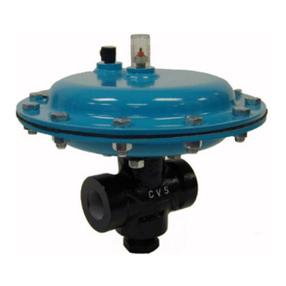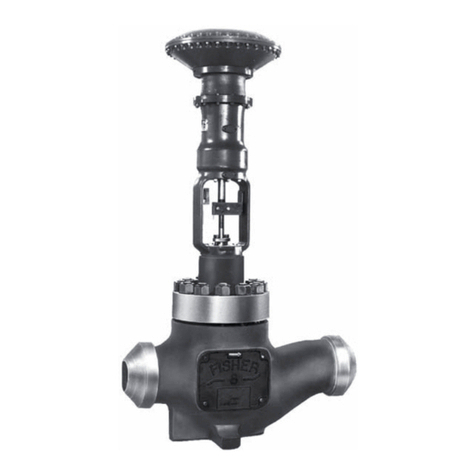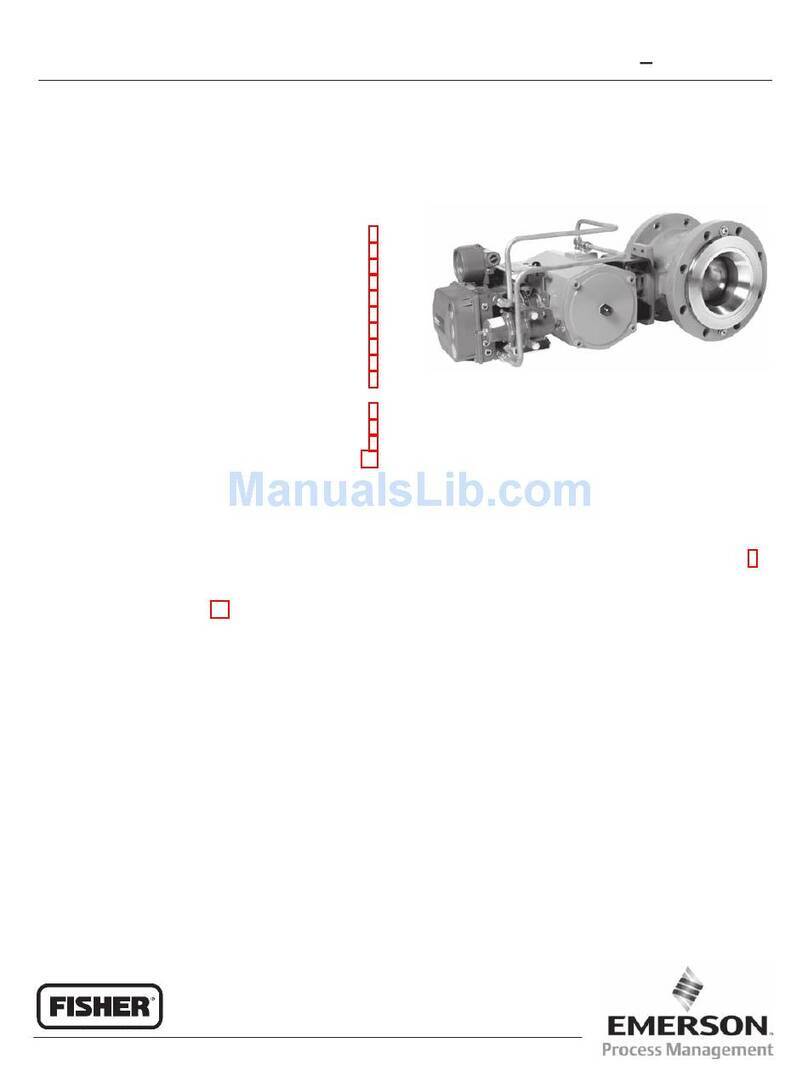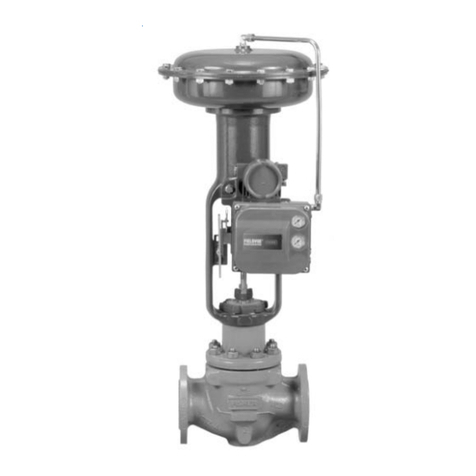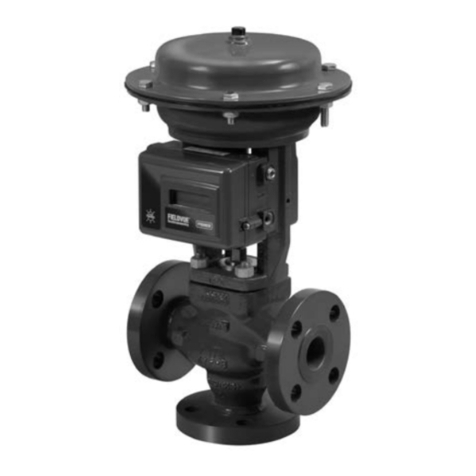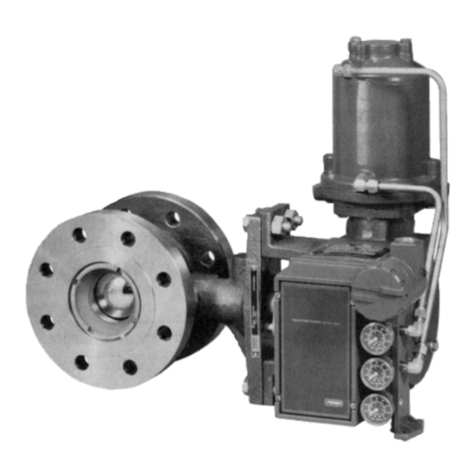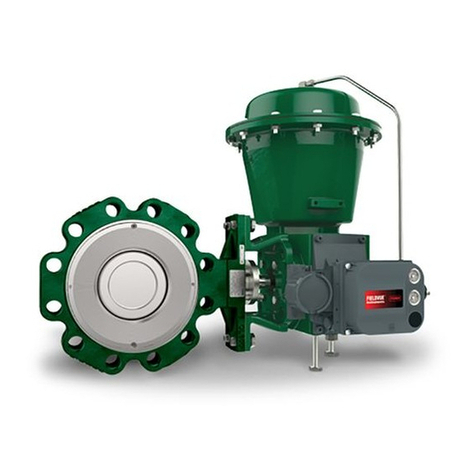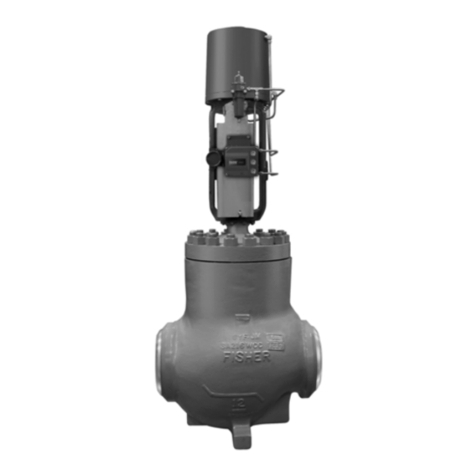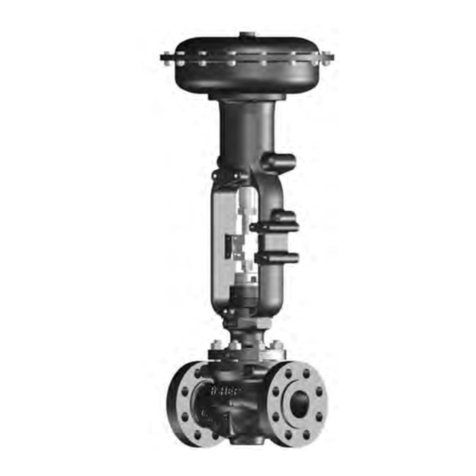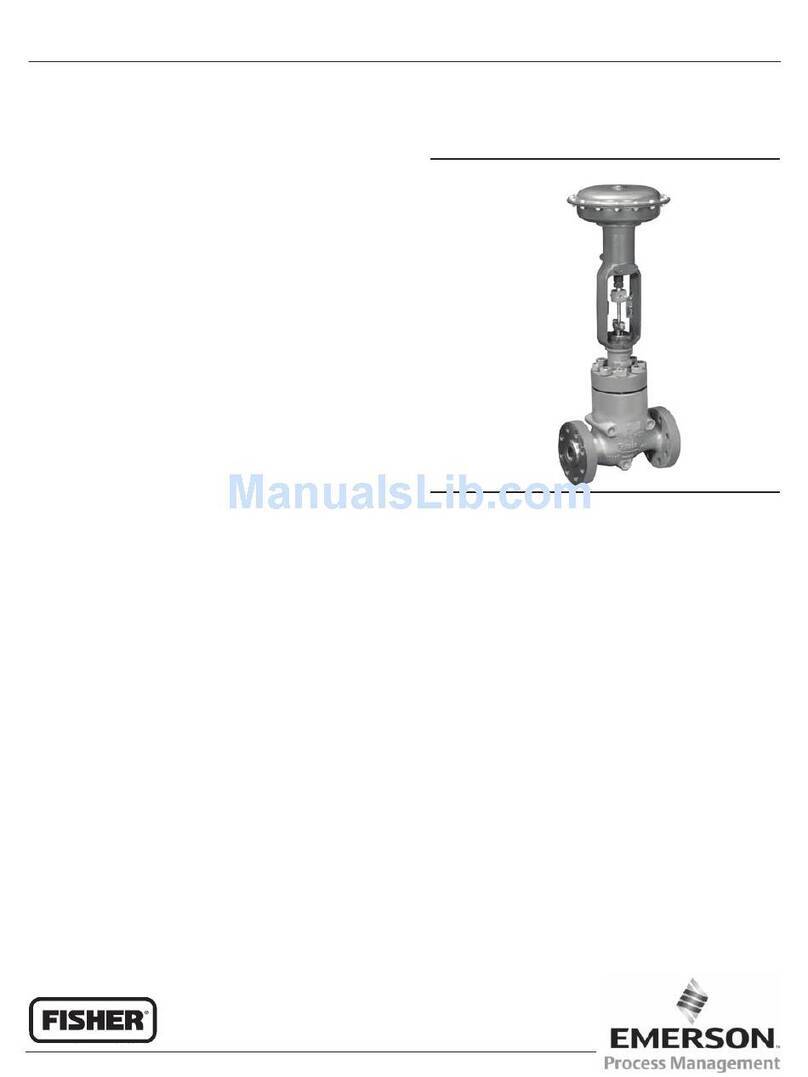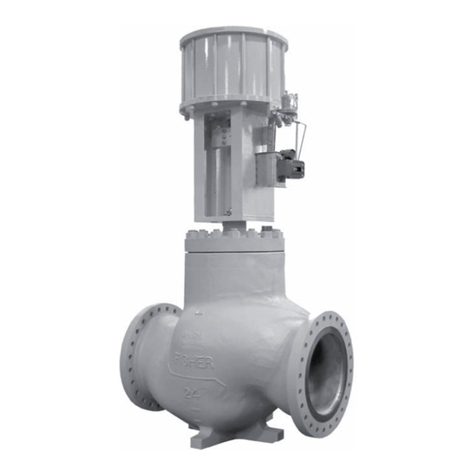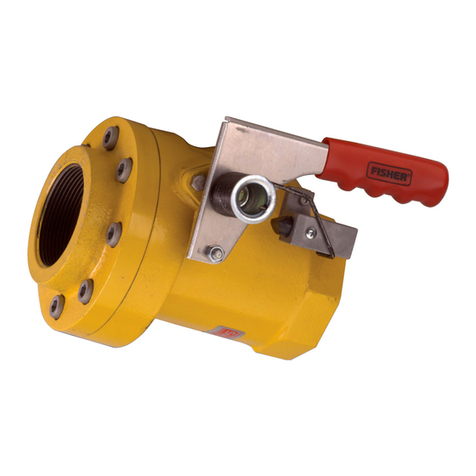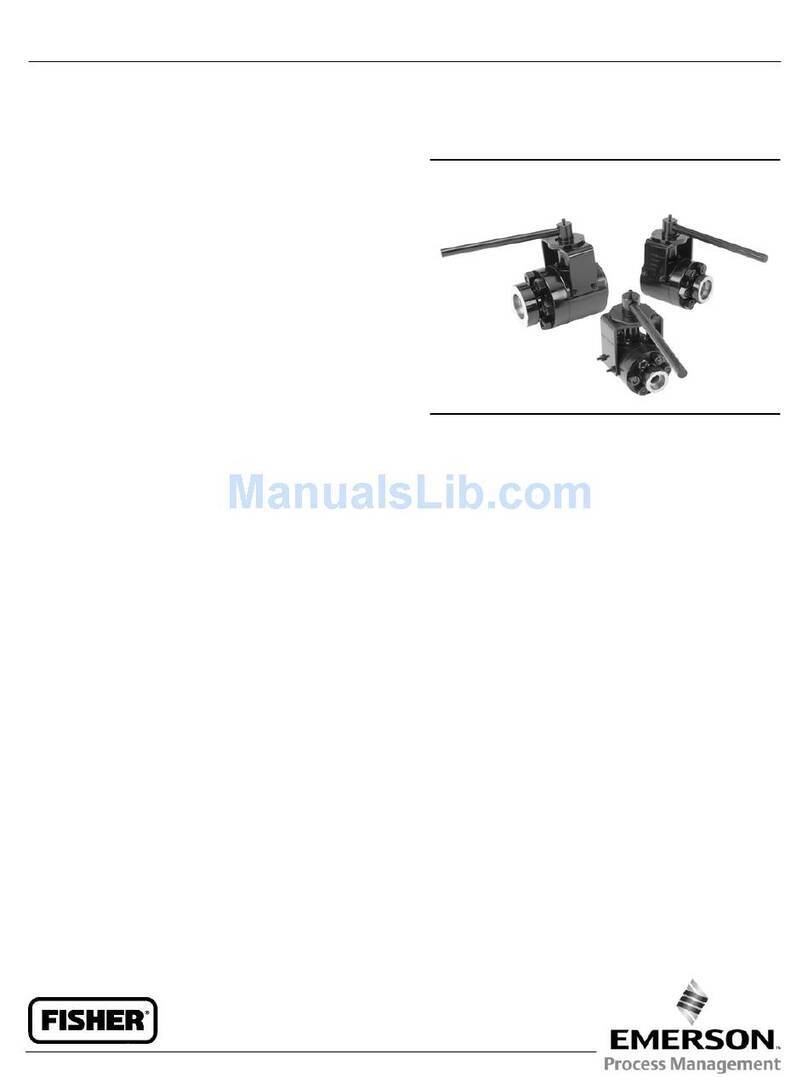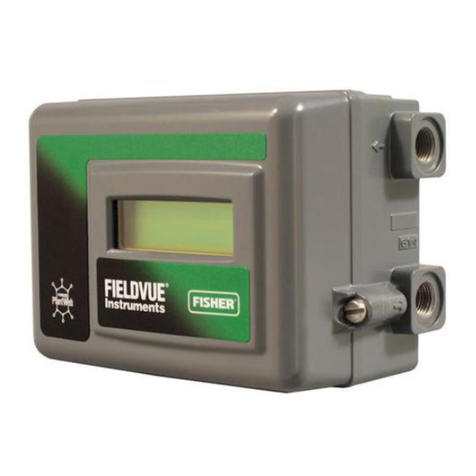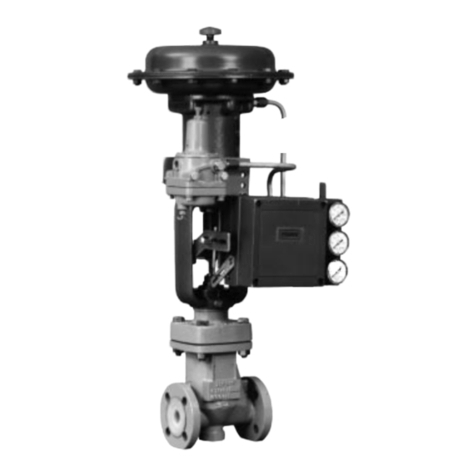
Instruction Manual
D100422X012
V250 Valve
May 2017
2
Table 1. Specifications
Valve Sizes and End Connection Styles
NPS 4 through 24 flangeless valves retained by line
flange bolts and designed to fit between ASME
raised‐face or ring‐type joint flanges. See table 2 for
valves that install between ASME flanges
Maximum Inlet Pressure(1)
Consistent with applicable pressure‐temperature
ratings listed in table 2
Maximum Allowable Shutoff Pressure Drop(1,2,3)
Single‐Seal and Dual‐Seal Construction:
155 bar (2250 psi) at 38_C (100_F) and 103 bar (1500
psi) at 82_C (180_F) except where further limited by
the pressure‐temperature rating of the valve body
Flow Ring Construction: Limited by the
pressure‐temperature rating of the valve body
Seal Material Temperature Capability(1)
Single‐Seal and Dual‐Seal Construction:
-46 to 82_C (-50 to 180_F) with LCC or stainless steel
valve bodies
Flow Ring Construction with Nitrile O‐Rings: -46 to
93_C (-50 to 200_F) with LCC steel and stainless steel
valve bodies
Flow Ring Construction with Fluorocarbon O‐Rings:
-46 to 204_C (-50 to 400_F) with LCC steel and
stainless steel valve bodies
Flow Characteristic
Modified equal percentage
Flow Direction
Forward Flow: Single seal construction is standard for
forward flow (see figure 4)
Bidirectional Flow: Flow ring construction can be used
for either forward or reverse flow
(see figure 5)
Bidirectional Shutoff: Dual seal construction is
required to provide shutoff for bidirectional flow (see
figure 12)
Shutoff Classification
Single Seal and Dual Seal Constructions: 0.0001% of
maximum valve capacity (less than 1% of Class IV,
ANSI/FCI 70‐2)
Flow Ring Construction: 1% of maximum valve
capacity
Maximum Ball Rotation
90 degrees
Actuator Mounting
Right‐hand or left‐hand mounted as viewed from the
valve body inlet for forward flow
Approximate Weights
See table 3
1. The pressure/temperature limits in this manual and any applicable standard or code limitation for valve should not be exceeded.
2. Maximum allowable shutoff pressure drops are further limited for the following constructions. The NPS 12 with S20910 drive shaft is limited to 128 bar (1862 psi) from -46 to 59_C
(-50 to 139_F) and to 103 bar (1490 psi) at 93_C (200_F). The NPS 16 with 17‐4PH steel, with 2‐1/2 inch splined drive shaft is limited to 69 bar (1000 psi), and with the S20910, 2‐1/2 inch
splined drive shaft is limited to 55 bar (795 psi) at all service temperatures. The NPS 24 with S20910 drive shaft is limited to 92 bar (1336 psi) at all service temperatures.
3. NPS 20 CL900 and NPS 24 CL900 flow ring is limited to 1500 psi.
Table 2. Pressure Rating and Flange Compatibility
Valve Size, NPS Inlet Pressure Capability ASME Flange Compatibility
4
Consistent with CL600 or 900 (ASME B16.34) CL600 or 900 raised face or ring‐type joint flange (ASME B16.5)
6
8
10
12
16 Consistent with CL600 (ASME B16.34) CL600 raised face or ring‐type joint flange (ASME B16.5)
20 Consistent with CL600 or 900 (ASME B16.34) CL600 or 900 raised face or ring‐type joint flange (ASME B16.5)
24
